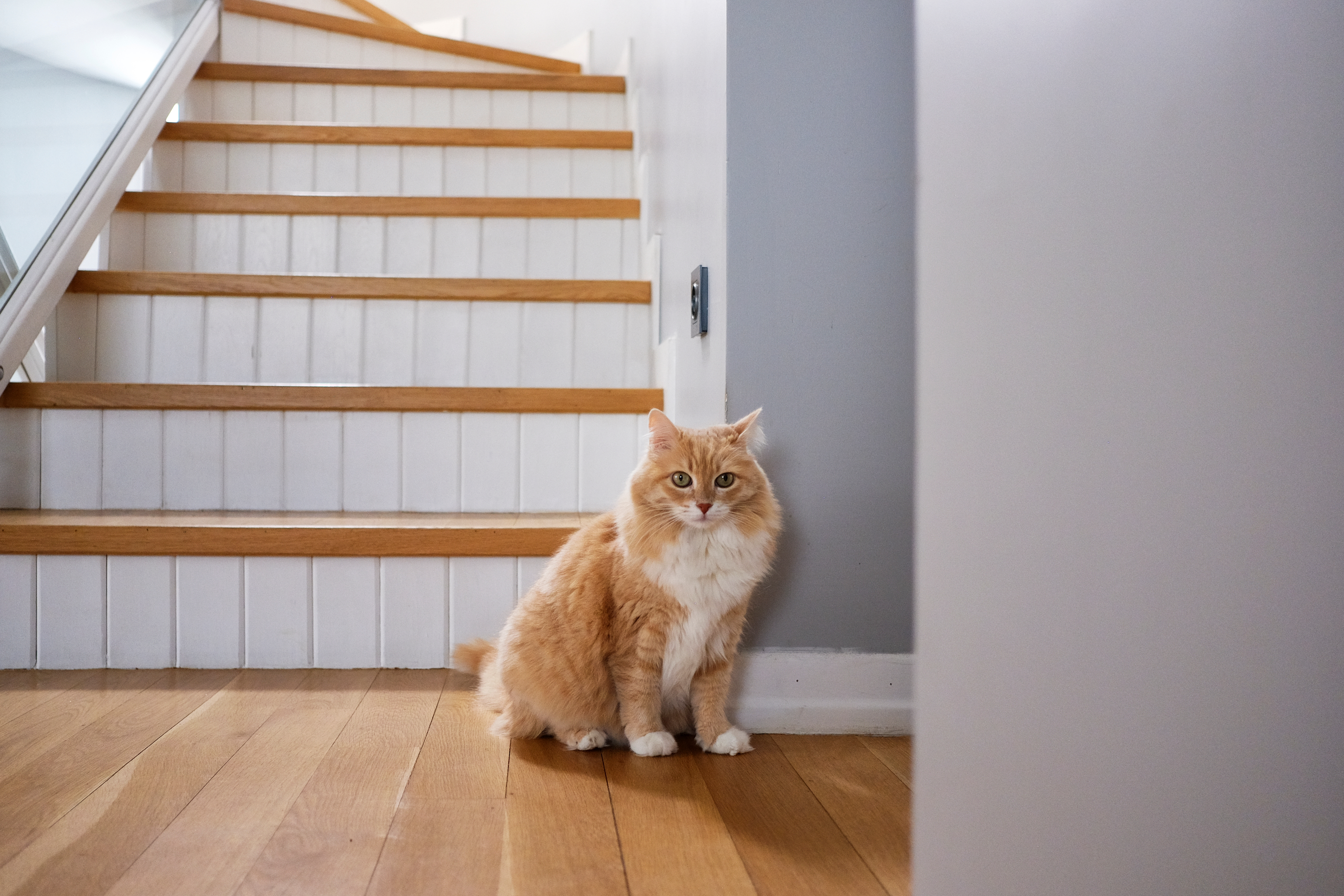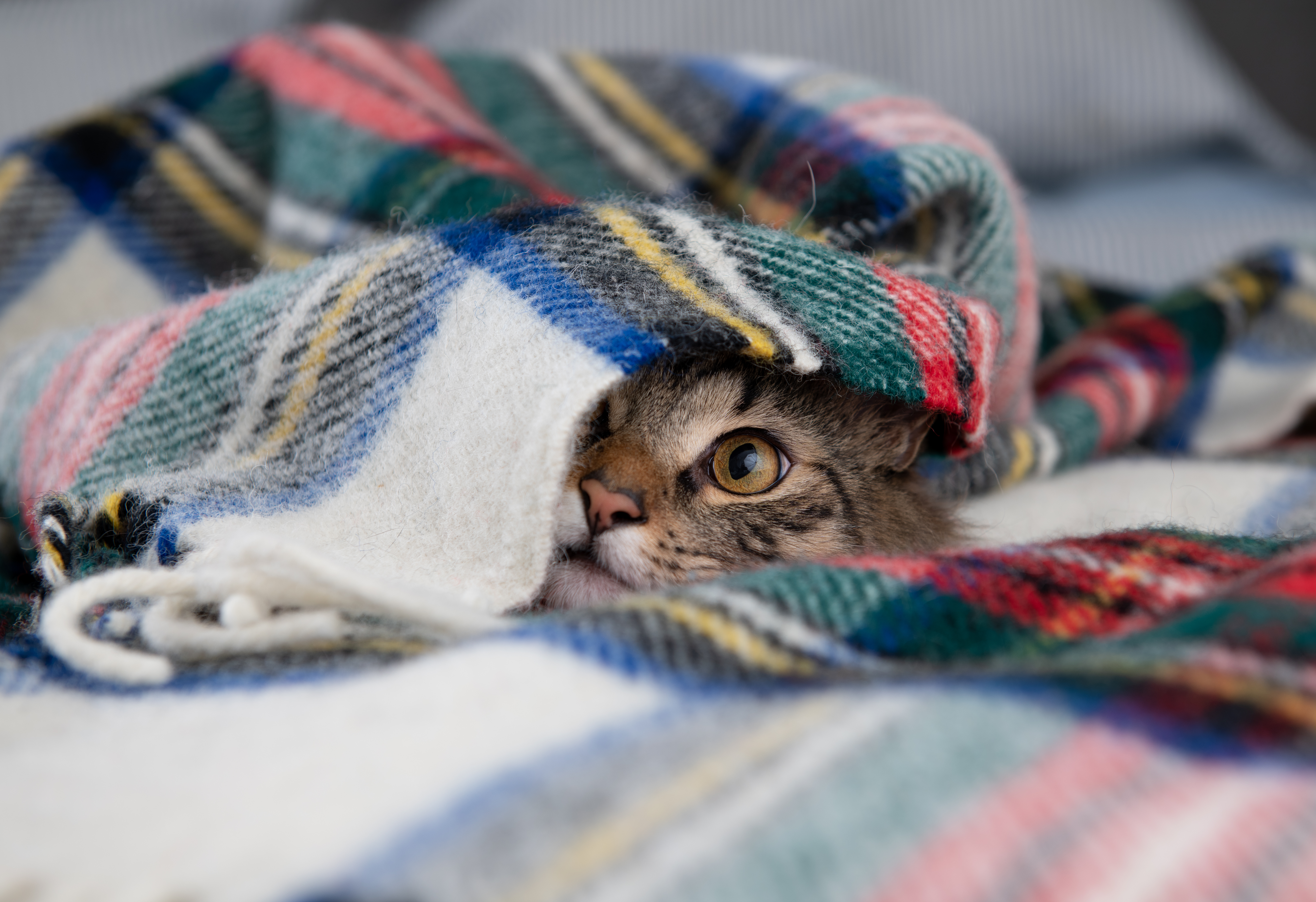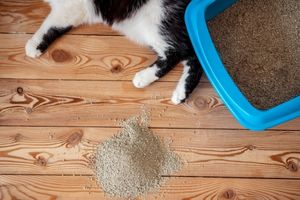It’s not always easy to tell when a cat is ill or injured. You might think that you’d be able to tell right away if your feline friend were in pain. Unfortunately, even the most attentive and loving pet parents often don’t know there is a problem until it becomes quite severe. Cats tend to hide their symptoms, making it challenging to care for them properly while sick or hurt. By the time a cat shows signs of distress, whatever problem they are dealing with has usually reached an advanced state.
Hiding pain is natural for cats. However, as your cat’s veterinarian, we’d like to tell you why cats hide their pain. We would also like to share some subtle symptoms that could indicate that your feline friend is hurting. Read on to learn why cats hide pain and discover what you need to know.
Why Do Cats Hide Pain?
Cats’ instincts tell them to hide signs of pain or distress. This is likely an evolutionary holdover from their wild ancestors. In nature, pain symptoms paint a target on animals’ backs, letting nearby predators know they are weak. Also, sick and injured animals are more likely to be abandoned by their group because they make other members more vulnerable.
Your indoor cat’s most significant concern may be deciding which sunspot to nap in, but these ingrained instincts remain. Your cat could also perceive other pets and household members as threats or competition for food, water, and other resources. And this makes them fear that they will miss out on those resources if they show signs of weakness. Masking their symptoms makes them feel safer and more secure — even when they live inside and realistically have little (if anything) to fear.
What You Need to Know: Often-Overlooked Symptoms of Cats in Pain
No matter how much pets try to hide pain, there are almost always subtle signs indicating something is wrong. Being an attentive pet parent is crucial because it enables you to notice these subtle symptoms and behavioral changes.
Keep a watchful eye, and reach out to us right away if you notice any of the following often-overlooked pain symptoms:

Decreased Appetite
Schedule an appointment when your cat stops eating or drinking or consuming significantly less cat food than usual. Inappetence is usually one of the earliest warning signs that something is wrong. Your cat could have pain from periodontal disease, an injury, or an underlying illness, so address this symptom as quickly as possible.

Decreased Activity
Even if you are usually a pretty active person, you probably wouldn’t feel like taking a long hike or hitting the gym if you were in significant pain. Likewise, cats experiencing pain are likely to spend more time lying around than usual. They may also lose interest in once-loved activities, like playing with you or their furry siblings.

Changes in Grooming Habits or Appearance
Has your usually fastidious feline stopped caring for their coat? Or are they excessively licking a specific area? In either case, it could be a sign of pain. Cats may stop grooming when pain makes self-care painful. And referred pain is a common cause of excessive grooming in a particular location. For example, your cat might overgroom the base of their tail/lower back area excessively if they have kidney problems. Painful cats will typically stop using the scratching post, and their nails may become overgrown. Closely examine their nails to determine if they need to be trimmed. You also want to ensure their nails aren’t growing into the pads of the feet.

Refusal to Jump On Surfaces or Climb Stairs
Injuries and joint pain often prevent cats from jumping up onto surfaces and going up and down stairs. If your feline friend is suddenly spending more of their time hanging out on the floor when they used to hop up on your bed, sofa, or kitchen counter, don’t mistake this as a simple sign that your cat is getting older. Schedule a veterinary visit to rule out underlying issues. Even if they have developed a senior cat-related disorder, like arthritis, there are things we can do to make them more comfortable and enhance their quality of life.

Behavior Changes
Has your cat — who has been a lovebug for years — suddenly decided they don’t like being petted? Is your typically friendly feline showing signs of aggression? Or has your formerly social cat started spending more and more time hiding under your bed or in another dark, quiet location? These often-overlooked behavior changes are common signs of pain from injuries and illnesses. You know your furry friend better than anyone else, so it’s up to you to note any changes in your cat's behavior or personality. Even if it seems minor, it’s worth bringing your cat in for a checkup.

Changes in Litter Box Habits
Cats are clean animals, and they very rarely stop using their litterboxes without a reason. If you have an adequate number of litterboxes in your home, keep them clean, and haven’t changed litters recently, changes in litterbox habits warrant professional evaluation. Your cat might have difficulty entering and exiting the box due to pain. Or, if your feline friend is suffering from urinary issues, they may associate using the litterbox with pain
Straining during urination (inside the litterbox or out) and producing little to no urine is an emergency. Your cat could have a potentially life-threatening urinary blockage, so seek immediate veterinary care.
Additional signs that your cat is in pain include:
- Difficulty standing up after lying down
- Lethargy
- Changes in posture or gait
- Excessive purring or unusual vocalizations
How Your Cat’s Veterinarian Can Help
When you schedule an appointment with us due to concerning symptoms, we’ll carefully examine them to determine the underlying cause. We may need to run diagnostic tests in addition to performing a hands-on exam, which we will discuss with you before proceeding. Depending on what’s going on with your precious pet, we may recommend a variety of treatments or medications to ease their pain and treat the underlying problem. Our team will do everything possible to improve your feline friend’s quality of life and help them enjoy many healthy, comfortable, and happy years by your side. Contact us today if you have any reason to think your cat could be in pain.

